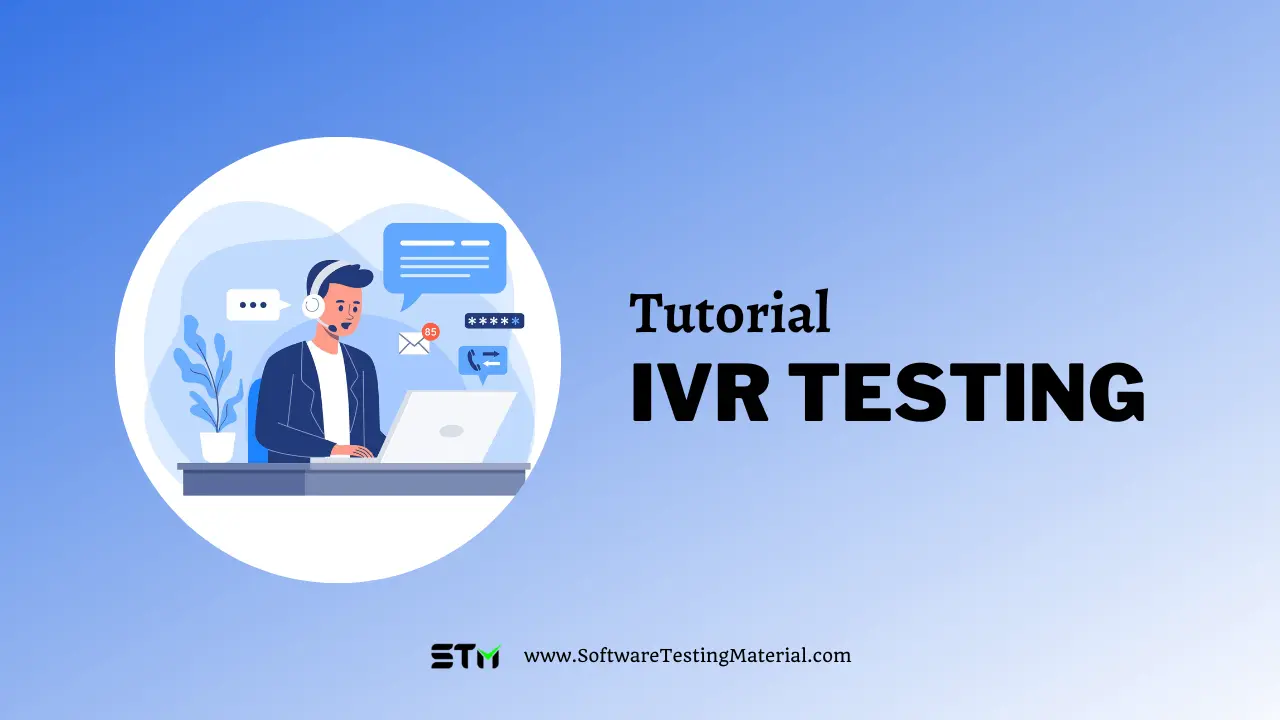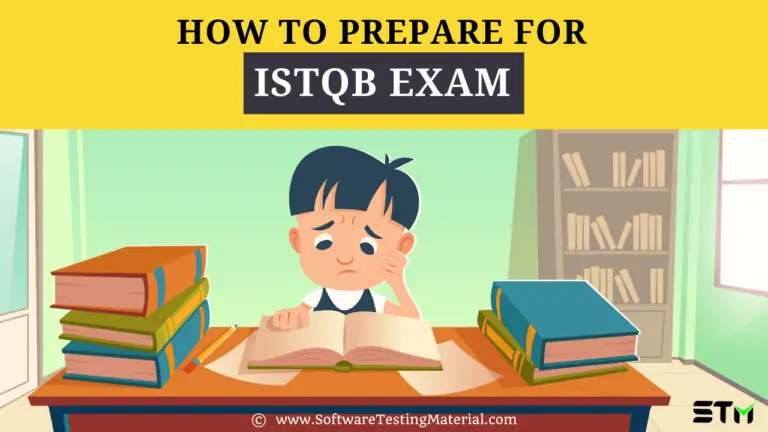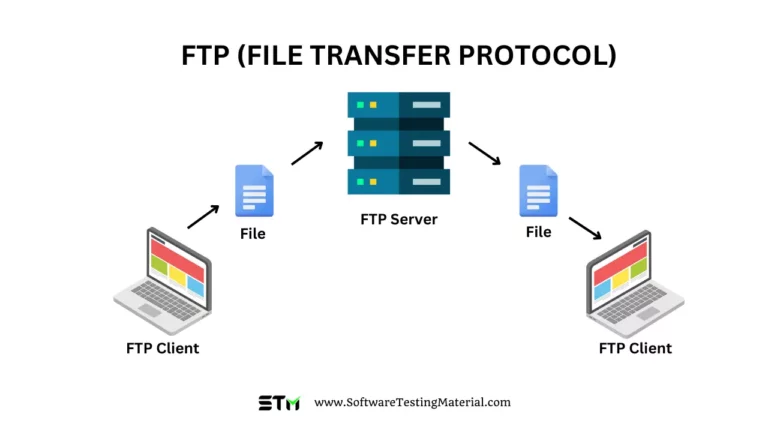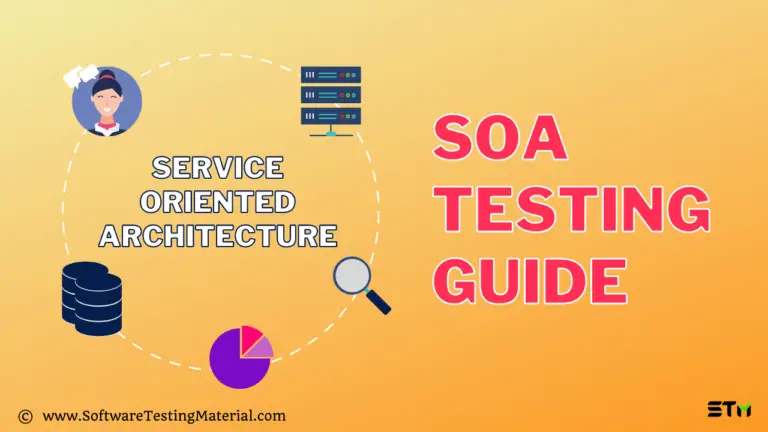IVR Testing: A Comprehensive Beginner’s Guide
Interactive Voice Response (IVR) is a critical component of modern customer service, allowing businesses to efficiently manage high volumes of calls.
However, the effectiveness of an IVR system is heavily reliant on its performance, which is where IVR Testing comes into play.
IVR Testing is a process that ensures the system is functioning optimally, providing accurate responses, and delivering a superior customer experience.
It involves a series of checks and tests designed to identify and resolve any potential issues, ensuring the smooth operation of the IVR system.

What is IVR
IVR, or Interactive Voice Response, is a technology that allows automated systems to interact with callers through the use of voice commands and touch-tone inputs.
Often used in call centers, IVR systems can respond to callers with pre-recorded or dynamically generated audio to direct users on how to proceed.
By using IVR systems, callers can easily access information, perform transactions, or resolve issues without the need for a live agent.
Consequently, businesses can improve customer service efficiency by empowering customers to manage their own service needs.
What is IVR Testing
IVR Testing is a process used to evaluate the functionality, performance and user experience of an IVR system.
This type of testing is crucial as it ensures the IVR application can handle high call volumes, correctly route calls, understand voice and DTMF (dual tone multi frequency) inputs, and deliver clear audible responses.
IVR Testing can be performed manually or automated, with the latter being more efficient and reliable, particularly for complex and large-scale IVR systems.
Key aspects of IVR testing include checking menu response times, ensuring accurate recognition of voice commands, and confirming that the system correctly routes calls.
Comprehensive IVR testing helps identify and rectify potential issues, reduce operational costs, enhancing customer satisfaction and ensure seamless telephonic communications for businesses.
Why IVR testing is required?
IVR testing is indispensable for several reasons.
Firstly, it ensures that the IVR system is functioning as per its design and delivering the desired outcomes.
Without proper testing, businesses risk frustrating their customers with a system that is difficult to navigate or doesn’t correctly recognize voice inputs, leading to poor customer satisfaction.
Secondly, testing can identify potential bottlenecks and flaws in the system that can be addressed before they impact the customer experience.
Also, it verifies the integration of the IVR system with other elements of the business infrastructure such as the database server, ensuring smooth and hassle-free operations.
Lastly, regular testing enables businesses to adapt their IVR systems to evolving customer needs and expectations, hence maintaining a high standard of service.
IVR System Architecture
The architecture of an IVR system consists of several key components that work together to create a seamless experience for users.
Telephony Interface: Telephony interface serves as the bridge between the caller and the IVR system. It processes incoming calls and converts voice signals into digital data that the system can interpret. This part ensures that the call can be correctly routed and connected to the right service.
Application Server: This is where the logic of the IVR system resides. It contains the scripts and workflows that determine how calls are handled based on user inputs. When a caller presses a button on their phone or speaks a command, the application server interprets this input and decides how to respond.
Database: The database stores all relevant information that the IVR system might need, such as customer data, service options, and frequently asked questions. This allows the system to provide personalized responses and quick access to relevant information.
Media Server: This component manages the audio files and responses heard by the caller. It plays pre-recorded messages, announcements, and prompts, ensuring that the information conveyed is clear and engaging. The media server also handles the collection of voice inputs from users.
Analytics and Reporting: Effective IVR systems include a mechanism for tracking performance and user interactions. This component gathers data about call volumes, user behavior, and system efficiency, which can help businesses refine their IVR system and improve customer satisfaction.
Together, these components create a robust IVR system that can handle various tasks, from simple information retrieval to more complex interactions. By understanding this architecture, businesses can better design and implement IVR solutions that enhance their customer service operations.
How IVR System handles customer inquires (Step by Step process)
IVR systems follow a structured approach and efficiently handles customer inquiries, providing a seamless and satisfactory user experience.
- Call Initiation: The process begins when a caller dials the phone number associated with the IVR system. Upon connecting, the caller is greeted with an introductory message that outlines the available options.
- Call Routing: The system uses predetermined logic to route the call to the appropriate service based on the caller’s input. This can involve pressing a number on the keypad or speaking a specific command.
- User Input Handling: As the caller navigates through the options, their inputs are captured by the application server, which interprets these commands or entries to determine the most suitable response.
- Information Retrieval: If the user selects an option that requires specific data, the database is accessed to retrieve the relevant information. This can include account details, service availability, or answers to common questions.
- Response Delivery: Once the information is processed, the media server delivers an appropriate response, playing back audio files containing the necessary information or options for the caller.
- Call Completion: After the interaction, the system provides the caller with an option to end the call or to continue exploring additional services. Upon completion, the analytics and reporting component logs the interaction details for future analysis.
An effective IVR system architecture optimizes customer interactions by seamlessly integrating various components to enhance service delivery.
How to Test an IVR System?
Testing an IVR system is a necessary step towards ensuring its performance, usability, and effectiveness. Here are a few steps you can follow to test an IVR system:
- Develop a Test Plan: Outline all the possible paths a user could take when interacting with the IVR system. Include both common and rare scenarios to ensure comprehensive testing.
- Perform Functional Testing: This involves calling into the IVR system and following each path outlined in the test plan. Make sure each option works correctly and routes the caller to the appropriate destination.
- Evaluate Voice Quality: Ensure that the pre-recorded messages are clear and easy to understand. Check if the system can recognize and respond to voice commands accurately.
- Test System Load: Conduct stress tests to evaluate how the IVR system performs under high call volumes. This will help identify any potential issues that could affect the system’s performance.
- Collect and Analyze Data: Use data gathered to identify any recurring issues or areas that need improvement. This can help in refining the IVR system and enhancing its effectiveness.
Regular testing and adjustments based on the results can help maintain an effective, efficient, and user-friendly IVR system. It is essential to regularly review and update the system to ensure it meets the changing needs of both customers and the business.
What are the basic checkpoints in an IVR-enabled system?
The basic checkpoints in an IVR-enabled system include:
- Menu Navigation: Verify that the IVR menu is user-friendly and easy to navigate. The flow from one menu to the next should be logical and streamlined.
- Voice Recognition: Test the efficiency of the Automatic Speech Recognition (ASR) engine. It should be able to accurately interpret a variety of accents and speech patterns.
- DTMF Inputs: Check the system’s response to DTMF (Dual-Tone Multi-Frequency) inputs or keypad inputs. It should correctly identify and react to these.
- Text-to-Speech Functionality: Evaluate the Text-to-Speech (TTS) engine for clarity and naturalness of speech.
- System Integration: Ensure that the IVR system interacts seamlessly with other business systems like the customer database server.
- Performance Under Load: The system should remain stable and efficient even under high call volumes.
- Error Handling: The IVR system should handle errors effectively, providing clear instructions to the user when something goes wrong.
- Security: It’s essential to validate the system’s capability to protect sensitive customer information during a call.
- Fallback Mechanism: In case of system failure, there should be an efficient fallback mechanism, such as transferring the call to a human operator.
- Real-Time Monitoring: The system should have real-time monitoring capabilities to identify and resolve any issues that may arise quickly.
- Call Routing: Test the accuracy of call routing to ensure that it directs calls to the correct department or agent based on customer needs.
Additional Tips for Improving an IVR System
Here are a few additional tips that can help improve an IVR system:
- Personalize Messages: Use customer data to personalize messages and make them more relevant. This will create a more personalized experience for the caller and can lead to higher satisfaction.
- Provide Self-Service Options: Allow callers to complete simple tasks, such as checking their account balance or making payments, without having to speak to an agent. This will reduce call times and improve customer experience.
- Include a Callback Option: If the wait time is long, give callers the option to receive a callback instead of waiting on hold. This can reduce caller frustration and improve overall satisfaction.
- Optimize Menu Structure: Keep the menu structure simple and easy to navigate. Avoid long and complex menus, as this can lead to caller confusion and frustration.
- Regularly Update Prompts: Make sure that prompts are up-to-date and accurate. Outdated or incorrect information can cause confusion and frustration for callers.
- Consider Language Options: If your business serves a diverse customer base, consider offering language options in the IVR system. This will help improve accessibility and cater to the needs of all customers.
- Gather Feedback: Regularly gather feedback from customers on their experience with the IVR system. This will help identify areas for improvement and ensure that the system is meeting the needs of customers.
- Integrate with Other Channels: Integrate the IVR system with other customer service channels, such as live chat or social media. This will provide a seamless experience for customers and improve overall satisfaction.
These are some of the essential checkpoints that need to be considered while implementing an IVR-enabled system. Additionally, it’s crucial to continuously monitor and test the system for any updates or changes that may affect its performance. Regular maintenance and optimization can ensure the smooth functioning of an IVR system, enhancing customer experience and overall business efficiency.
Furthermore, as technology continues to advance, new features and functionalities may be added to IVR systems to improve their effectiveness. These could include artificial intelligence integration for more personalized interactions, multilingual support to cater to a diverse customer base, and speech recognition capabilities for a more natural and efficient communication process.
By implementing these tips, businesses can enhance their IVR systems and create a more positive experience for their customers.
IVR Testing Scenarios
Testing Interactive Voice Response (IVR) systems is crucial to ensure their efficiency and reliability.
Speech recognition technology has made significant progress in recent years, but glitches can still occur. IVR testing can help address various aspects such as voice call quality, fraud, call routing, accent and pronunciation, call security, and workflow.
A comprehensive approach involves examining various scenarios to verify that the system meets the required standards. Here are some typical scenarios for IVR testing:
- Call Routing: Verifying that the IVR correctly routes incoming calls to the appropriate department or agent based on the user’s selection.
- Call Transfer: Testing whether the system can efficiently transfer calls to live agents when necessary.
- Speech Recognition: Testing the system’s ability to accurately understand and respond to voice commands from users.
- DTMF Tone Recognition: Checking the system’s ability to recognize and react correctly to dual-tone multi-frequency signaling tones (the sounds made when a touch-tone phone key is pressed).
- System Overload: Checking how the system behaves under high call volume to ensure it doesn’t crash or fail.
- Error Message Delivery: Confirming that the system provides clear and helpful error messages when a problem occurs or a user makes an invalid selection.
- Hold Music or Message: Testing the quality and continuity of music or messages played for callers on hold.
- Multilingual Support: Verifying the system’s ability to recognize and respond in multiple languages, if applicable.
- Data Security: Ensuring that any sensitive data collected through the IVR system is appropriately secured.
- Caller Authentication: Checking that the system has a process in place to authenticate callers (such as date of birth, or any other relevant information to confirm the caller’s identity) to prevent any unauthorized access.
- Call Quality: Evaluating the clarity and quality of both incoming and outgoing calls to ensure good sound quality for users.
- Call retry option: Occasionally, a caller may struggle to recognize or comply with a message or prompt. Therefore, it is imperative for the IVR system to possess the capability to reiterate the prompt a predetermined number of times prior to disconnecting or transferring the caller to an agent.
- Fallback Options: Testing backup options for when the IVR system is unavailable, such as a voicemail box or alternate contact method.
- IVR workflow: In-depth testing is crucial to ensure that prompts in the system are related to the correct flow. Misdirected prompts can lead to customer confusion and delays in resolving time-sensitive issues like reporting a lost or stolen credit card. Ensuring prompt accuracy in the IVR is essential to avoid serious ramifications.
Types of IVR Testing
IVR Load Testing
Load testing checks if IVR systems can handle typical loads during regular use. Companies make calls via their regular telephone network to test for any issues as volume increases. They start with a few simultaneous calls and gradually increase to thousands of callers. Performance metrics of the underlying software, such as RAM usage and CPU utilization, are monitored. These metrics help engineers assess if the network is close to overloading. If necessary, bandwidth or server capacity can be increased to eliminate bottlenecks.
IVR Stress Testing
Stress testing is similar to load testing but with a focus on handling high demand. Testers route calls through the PSTN to simulate regular customer usage. By increasing the number of calls to the IVR, they determine the system’s capacity and implement strategies to improve the situation.
IVR Feature Testing
Feature testing focuses on ensuring the system functions as intended. For example, when a customer calls a company hotline seeking assistance, the IVR system should guide them to select the correct option from a list. Testing also confirms that the system doesn’t forward users for invalid inputs, such as quoting numbers outside the given range. The goal is to address any inconsistencies before going live.
IVR Experience Testing
Experience testing is similar to mystery shopping for a company’s IVR system. The process involves regular calls to the hotlines, simulating customer interactions throughout the day. The goal is to evaluate the user experience, not just technically, but also in terms of understanding. These tests also assess the supporting infrastructure.
IVR Spike Testing
Spike testing is similar to stress testing but more intense. Companies often face sudden surges in traffic and must react accordingly. These spikes can be caused by network issues or server failures, resulting in call rerouting. Spike analysis assesses how systems handle changing loads, including total failure, slowdowns, or seamless adaptation.
IVR Soak Testing
Soak testing is the ability of systems to handle traffic over extended periods. For example, a typical soak test involves bombarding an IVR with a thousand calls per hour for 48 hours to assess the system’s capacity. Companies perform IVR soak testing to identify potential server capacity issues that may not emerge immediately in other testing methods. However, soak testing inherently takes more time compared to alternative approaches.
IVR Regression Testing
Regression testing ensures IVR systems perform as expected after third-party integration. Updates and integrations can sometimes disrupt IVR functionality, impacting the customer experience. Regression testing provides businesses with key insights into their IVR’s current status, revealing any service differences resulting from system architecture changes.
IVR Graduated Testing
Graduated testing is a systematic approach that involves progressively complex tests to evaluate each component of a system. By identifying issues early on, it enables quick and efficient resolution. Furthermore, this method ensures that an IVR system is well-prepared for unexpected events, ensuring optimal and accurate performance.
IVR Avalanche Testing
Avalanche testing simulates real-life user scenarios and interactions to ensure system performance with large user volumes. This testing helps identify bottlenecks and performance degradation. It is essential for a satisfactory user experience, even with high concurrent users.
IVR Disaster Recovery Testing
Disaster recovery testing for IVR systems is crucial to ensure resilience and reliability. It involves evaluating the system’s ability to withstand unexpected events like natural disasters, power outages, hardware failures, or technical issues. Testing helps identify weaknesses and ensures quick recovery, minimizing downtime. Implementing proper disaster recovery testing ensures reliable and secure IVR system operation even during unexpected events.
Performance Testing
Performance testing evaluates the system’s performance under heavy load. It is crucial to ensure that the IVR system can handle high call volumes without compromising the quality of customer service.
Security Testing
Security testing ensures that the system safeguards sensitive customer information. Automated voice interactions often involve exchange of personal data, making security a vital aspect of testing.
Usability Testing
Usability testing assesses the ease of use and the user-friendliness of the system. The aim is to provide a seamless customer experience.
Reliability Testing
Reliability testing determines the system’s ability to perform consistently under specified conditions. It measures the IVR’s dependability and fault tolerance.
Scalability Testing
Scalability testing tests the system’s capacity to adapt and scale up in response to an increased number of users.
Each of these tests contributes to the overall effectiveness of an IVR system, enhancing its ability to deliver high-quality, reliable, secure, and efficient customer service.
What are the challenges while testing an IVR system?
Testing an IVR system can present several challenges:
- Complexity of the System: IVR systems often have complex interactive menus and features, making it difficult to cover all possible scenarios during testing.
- Variation in User Interaction: The unpredictability of human behavior can lead to interactions with the IVR system that were not envisioned during the design phase, posing challenges to thorough testing.
- Voice Recognition: The system’s ability to accurately interpret a variety of accents and speech patterns can be challenging to test and validate.
- Integration Testing: IVR systems are often integrated with multiple other systems (such as CRM or ERP systems), making the testing process complex.
- Hardware Limitations: Testing the system’s performance under high call volumes can be limited by the available testing hardware.
- Security Testing: Ensuring that the system can securely handle sensitive customer data can be a complex task.
The above challenges highlight the need for a comprehensive testing strategy, combining automated and manual testing methods, to ensure the IVR system performs optimally under a wide range of conditions.
Conclusion
To sum up, it’s really important to thoroughly test IVR systems because they are quite complex and play a vital role in customer service. Despite the many challenges like system complexity, unpredictable user interactions, voice recognition differences, integration testing, hardware limitations, and security concerns, a strong testing strategy that combines automated and manual methods can effectively reduce these risks. Ultimately, a well-tested IVR system ensures smooth, efficient, and secure communication, which greatly improves customer satisfaction and builds trust.
FAQs
Can we automate test execution for an IVR system?
Yes, automating test execution for an IVR (Interactive Voice Response) system is not only possible, but also incredibly beneficial. Automated testing tools allow businesses to programmatically simulate various customer interactions, ensuring that the system behaves as expected under different scenarios. This reduces the need for manual testing, which can be time-consuming and prone to error. Furthermore, automated testing can be integrated into the software development cycle, allowing for continuous testing and faster detection of issues. Hence, it improves the reliability of the IVR system, enhances customer satisfaction, and ultimately supports the business’s overall strategy.
What is inbound and outbound IVR?
Inbound IVR refers to the handling of incoming calls by the IVR system. Typically, inbound IVR applications are employed in business phone systems, offering features such as music on hold, auto attendant, 24/7 self-service, and automatic call routing. On the other hand, outbound IVR involves initiating calls. Outbound IVR applications encompass telephone surveys, reminder calls, and notification calls.
What are the benefits of choosing Automated IVR Testing?
Manual testing can be a time-consuming and costly process, especially for businesses with high call volumes. However, by utilizing automatic IVR testing tools, you can conduct numerous test cases, accurately measure the quality and performance of your IVR system, and ultimately achieve an exceptional customer experience. This approach eliminates the need for a large number of volunteers and saves valuable time, all while ensuring reliable results.
– Automated IVR testing tools allow you to simulate IVR Users and IVR System
– IVR automation allows you to automate the IVR testing process, including call establishment, menu traversal, and traffic generation detection, using scripts
– Traverse all options on an Interactive Voice Response (IVR) menu for comprehensive testing, utilizing bulk call scripting
– Conduct voice recognition testing by employing bulk call scripting
– Automate Speech-to-Text conversion and analysis for recorded voice prompts
– Monitor IVR System for voice and data quality
What is the meaning of IVR?
IVR, or Interactive Voice Response, is a technology that allows users to interact with a computer system via voice or touch-tone keypad inputs. It is commonly used in customer service settings to manage and route incoming calls, providing automated responses and information without the need for a human operator. This system enhances efficiency and enables businesses to handle larger call volumes while improving customer experience.
Related posts:
- Best IVR Testing Tools
- Portability Testing in Software Testing
- Comparison Testing in Software Engineering
- How To Perform Use Case Testing
- Baseline Testing | How It Works
- Agile Testing Metrics: How Can Metrics Help?
- What Is DevTestOps? Process, Implementation & Benefits
- What Is QAOps? Process, Implementation & Benefits
- QAOps vs DevOps
- Best Email Testing Tools (free & paid) You Should Try


![Software Test Plan Template with Detailed Explanation [Sample Test Plan Document]](https://www.softwaretestingmaterial.com/wp-content/uploads/2015/12/test-plan-template-768x432.png)



